Interview with Tiina Alahuhta-Kasko, the President & CEO of Marimekko | an insight into the colourful prints kingdom
November 28,2018
Throwing back to 1951, when the Finnish textile designer Armi Ratia was still working with her husband at their print plant Printex. That is the time when the idea of making unique and colourful flower prints started dancing in her mind.
Hailing from Helsinki, this once small textile printing manufacturing is now one of the first true lifestyle design company to deliver originality and joy to peopleтs everyday lives. With their iconic Unikko bloom globally, the label has been a favourite of the design world. In the released Financial Statements 2017, the company reached an operating profit of over 8 million EURO, with an annual growth in consolidated net sales over 10% (read our archived report here).
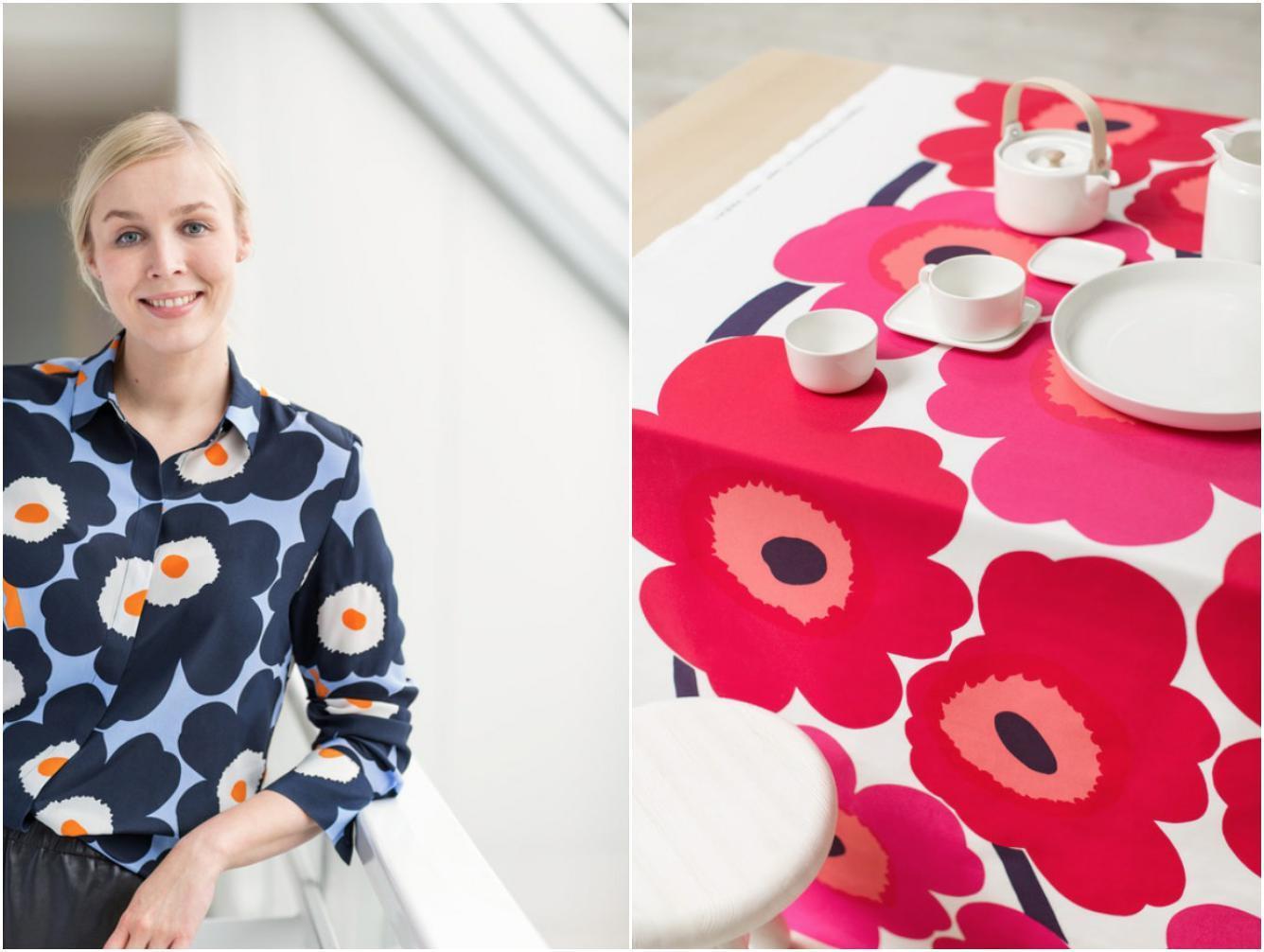
What makes Marimekko grow and succeed globally? To understand this from the very beginning, Luxe.CO travels to Helsinki and interviewed Tiina Alahuhta-Kasko, the President & CEO of Marimekko, who unveiled us the mysterious Nordic flower print kingdom.
With the background of Master of Economics from Aalto University, and MBA from HEC Paris, Tiina Alahuhta-Kasko (Tina) employed by the company since 2005. With the primary work experience and key positions in PR, Marketing and Cooperation, she started to work as the President & CEO since 2016.
Traditional Prints and Sustainability
upon our meeting with Tiina, Marimekko is preparing the 2018 A/W collection. The Helsinki-based headquarter is a cluster of office, store, showroom and manufacturing, gather the entire organisation from design, production, sales, quality, till commercial, and global marketing.
Tiina insisted starting our interview from visiting the manufacturing, she says, set the manufacturing in Helsinki mean tremendously to the company, here stands for the company culture. тHelsinki is the heart and soul of Marimekko, all beautiful prints start from here.т
From the traditional overlaying dyeing technique, which Marimekko is proud of, to the advanced digital printing, while witnessing the large-scale blank fabric go toward the machines, and transforming into bold prints and colours come to life, with the later distillation and colour fixing treatment, as well as the quality inspection, the entire production scene astounded us. Marimekko produces around a million metres fabric per year. Each meter of Marimekko fabrics is inspected in a designated inspection area. Even a minor defect can be detected by the quality inspectors, whom all have tremendous experience, and this work simply cannot be replaced by a machine.
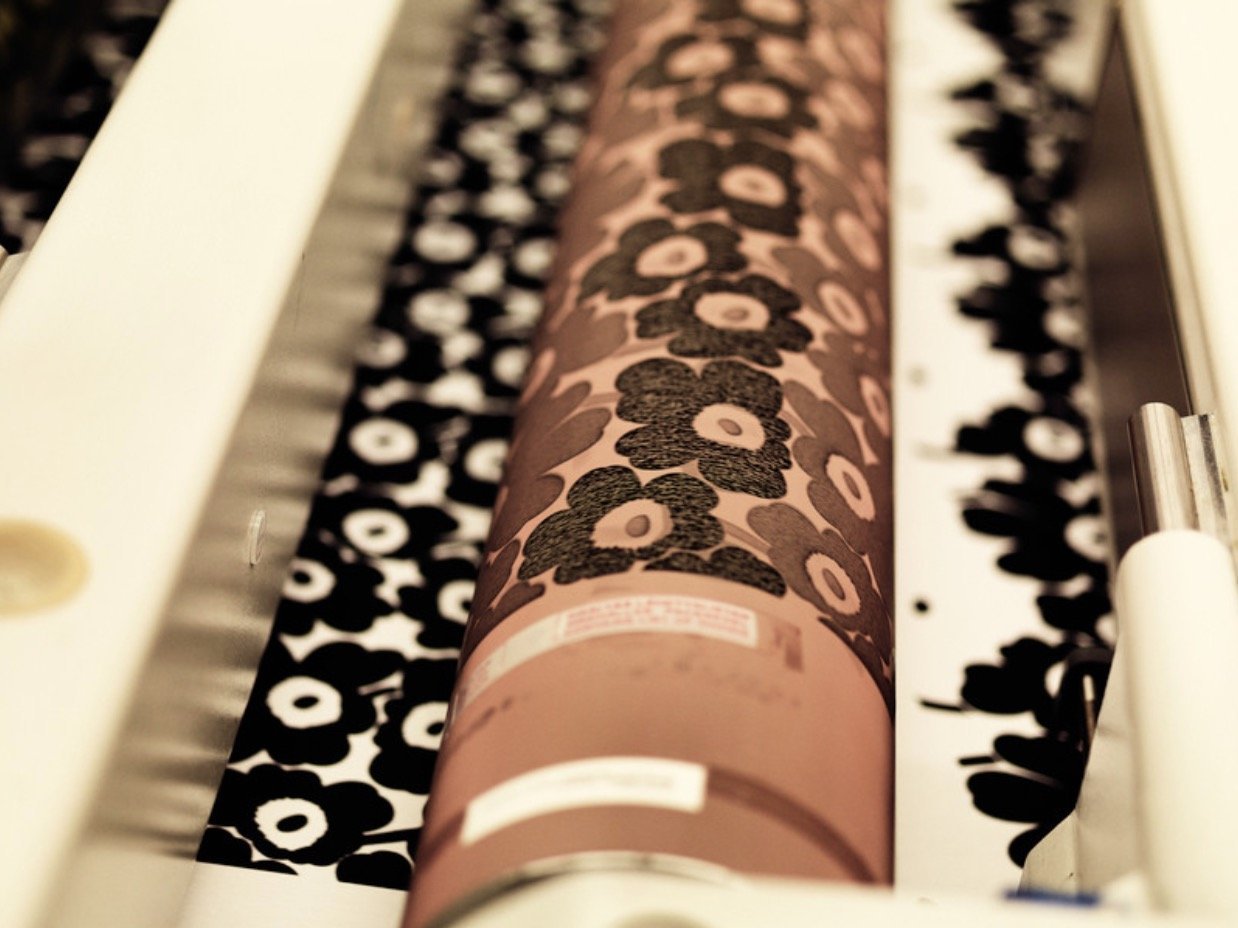
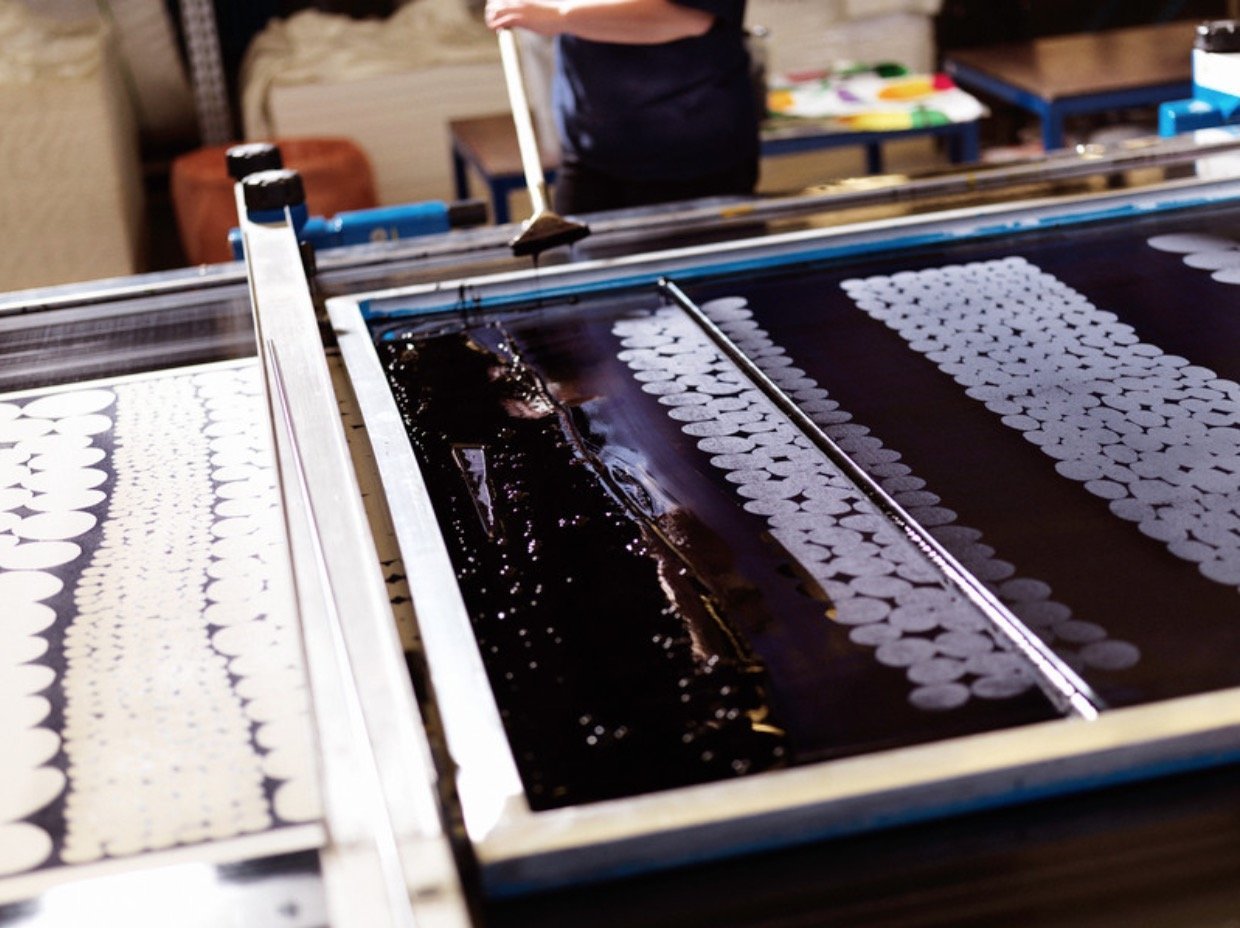
Tiina walked quickly among different machine rooms in the factory, emphasizing: "Whether that is a dying artist who sprays paint onto the fabric or a quality inspector who uses their bare eyes to detect the quality, they are all highly respected by the entire company. They have grown up with Marimekko together, and have accumulated decades of experience in their fields. I respect and admire them.т Till 2017, Tiina has been working with Marimekko for 12 years.
As Tiina mentioned, Marimekko still insists partial handcrafting under today's fast moving manufacturing pace. Since the belief of hand-made fabrics passes to the customer a warmth and human touch after removing the mechanical neatness never fades. Due to the limited colouring techniques in the early days, many prints are created through repeatedly colouring to obtain the desired effect. Marimekko still retains this traditional craft, Tiina emphasises: тWe have always focused on craftsmanship and do not blindly improve efficiency in the sense of time. Tradition is the essence, it needs to be passed by from generation to generation.т
Part of the quality approved fabrics will be sold directly in the store, and others will be made into interiors, clothing and bags. On the other hands, those defective ones will not be thrown away directly but will be taken in a more environmentally friendly manner, sustainability is a focus that Marimekko values.
Unlike many fashions or luxury brands, fabric printing is an essential part of the brand design, and the printing artists work hand in hand with clothing and accessories designers. In addition, most fashion brands are led by individual design director, at Marimekko, all designs are cultivated by the entire creative team, including designers, artists, or anyone works with Marimekko. Perhaps this is a secret Marimekko keeps its creativity and vigorousness.
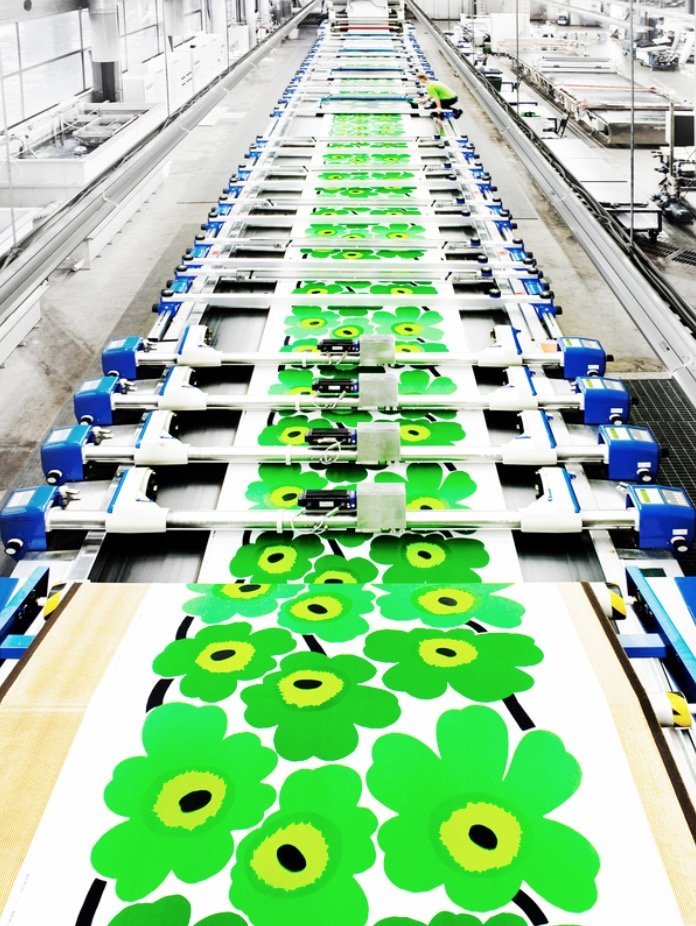
WHY FINNISH LOVE MARIMEKKO?
In the late 1940s, Finland was under a great depression after the turmoil of the Second World War. People's lives were incredibly difficult and in desperate need of positive elements to feel inspired. By then, Marimekko's founder, Armi Ratia, owned a textile and print factory together with her husband, and they hoped to bring some happiness and energy to the postwar Finnish. Therefore, Armi began recruiting artists and designers to design distinctive patterns and colour schemes, one of them who get involved is Maija Isola, who created the classic Unikko (in Finnish means poppies) for Marimekko. Later on, Armi came up the idea of making these prints into a garment.
In 1951, Armi Ratia held a fashion show in Helsinki, the public was fascinated with the bold colours and vivid patterns. All the clothes were sold out immediately after the show, which caused quite a stir at the time. From there, the name Marimekko was born: тMariт is a girlтs name in Finnish, and тmekkoт refers to тskirtт, put it together, that is тMaryтs skirtт. The essence of the brand is a combination of minimalism Nordic style and comfortable styling attitude. In 1952, the very first Marimekko store opened in Helsinki.
Undoubtedly, Marimekko's iconic prints differentiate itself from all the others. Even now, the simple, modern style decorated with bright colours and blended with natural elements such as poppies, can effortlessly bring a touch of colour for the sunshine-less dark winter in Nordic. With the development of the brand, nowadays, there are more than 3000 prints have been introduced into the market.

Besides the colour and prints, the brand spirit also encourages countless people all over the world. In a fast-paced and even impetuous time, Marimekko hopes to create a sense of joyfulness from the subtle objects of every life and encourage the attitude to enjoy our life from the details. The brand hopes that consumers will be impressed by the passion which connects human life and nature. Marimekko is to infiltrate all aspects of life and therefore, creates a lifestyle that is centred with energy and joy. This is also the reason, that there is no such concept in Marimekko as the main product line, instead, it is an integration of a wide range of products. тWe hope that people can enjoy life and express themselves through Marimekko's prints, fabrics and all products,т Tiina said.
At the same time, Marimekko does not set a specific age limit for its target customers, alternatively, allows the brand integrate into the life among different generations. тIf the grandmother likes it and mother likes it, then probably the daughter likes it as well. People value Marimekko very much, sometimes they pass by the precious pieces to their daughter and granddaughters instead of throwing it away, because Marimekko is a part of their life and memory.т
CREATING NEW LIFESTYLE WITH CROSSOVERS
Marimekko's production and design philosophy are based on large-scale prints, which are made into a variety of products including tablecloth, clothing, bedding and curtain. Therefore, it comes up with frequent crossovers with graphic designers and fashion brands.
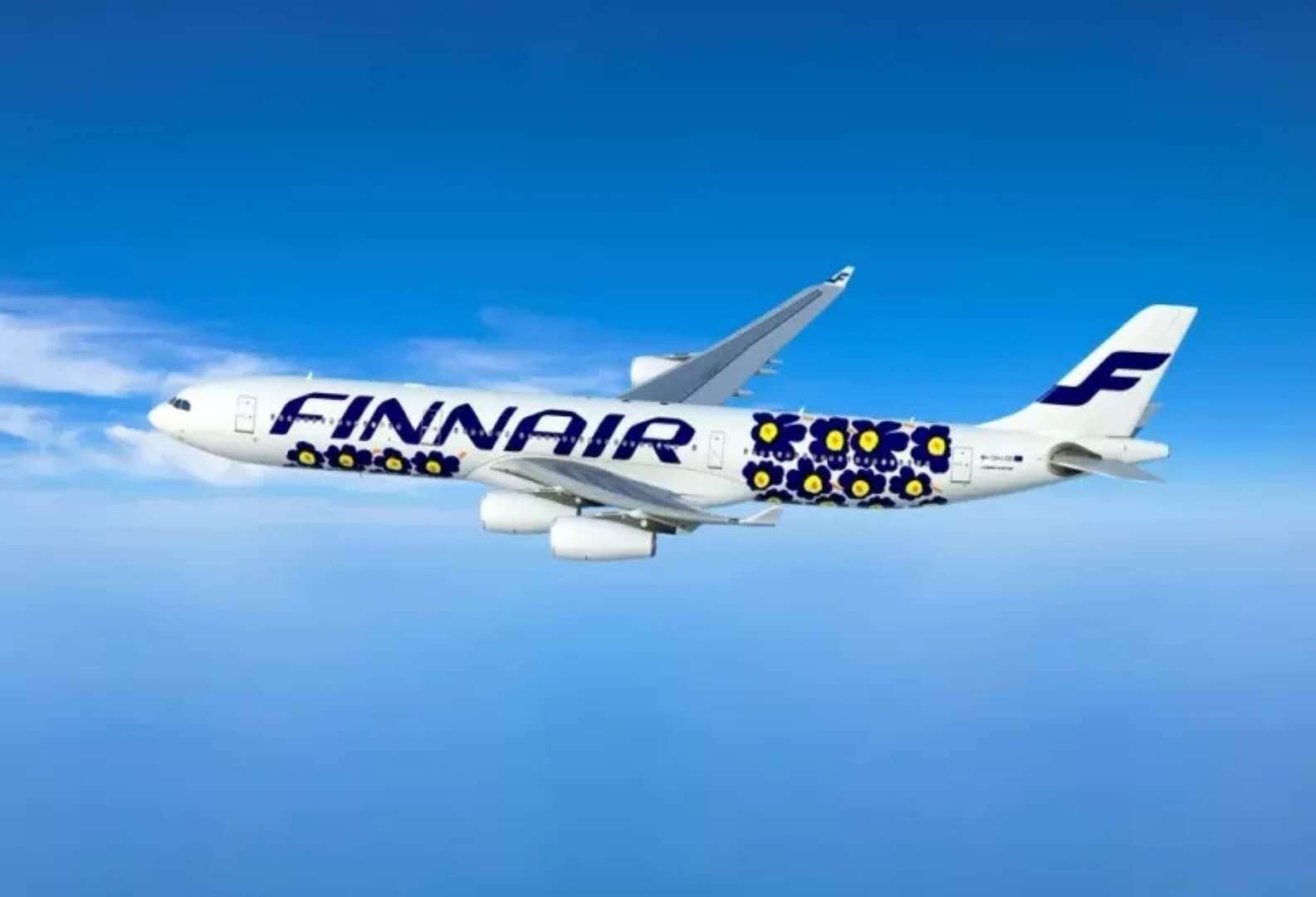
(In 2012, Marimekko collaborated with Finnair with the launch of A340 aircraft, painted the aeroplane with the iconic Unikko print designed by Maija Isola, and designed the items used on the flight.)
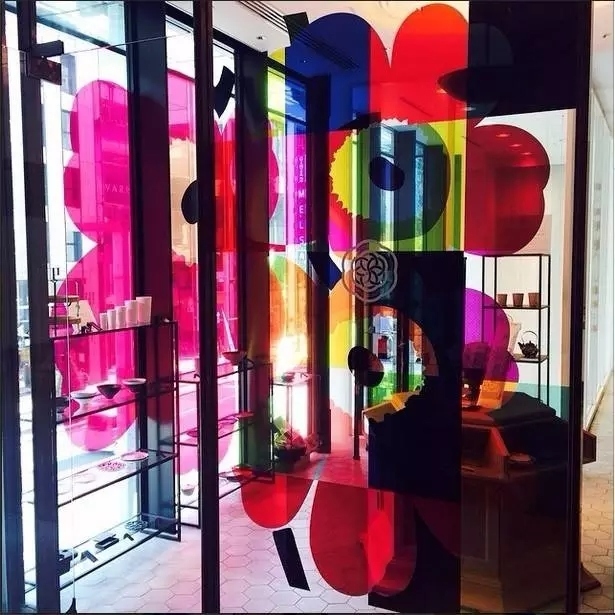
(In 2014, 60th anniversary of Unikko print, Marimekko launched a cafe in Ginza, Tokyo.)
When it comes to crossovers, Tiina responded: тWe have been working with universities on various projects, especially with the area of business and spreading design thinking in technology fields. We want to create synergy with creative young people from all fields." On the occasion of the 100th anniversary of Finland's independence this year, Marimekko also launched the "Marimekko Designathon" international competition, in collaboration with Slush, Europe's leading event for technology and start-ups, and Junction, the largest hackathon in Europe. Inviting customers to explore the technological innovation of VR/AR in the textile field.
KEEP UP THE PACE AND FOCUS IMPROVING IN-STORE EXPERIENCE
In 1957, Marimekko was invited by the most influential industrial designer of Finland, Timo Sarpaneva, to participate in the Milano Triennale. Due to unexpected reasons, the garments were transferred to Italy as the window exhibition in the Italian high-end department store La Rinascente, in which Giorgio Armani was the visual merchandising manager back then. During the US presidential campaign in the 1960s, the wife of former President Kennedy was criticized for frequently wearing expensive haute couture. As a response, she was shown in Marimekko cotton skirts, not only wearing them to support her husbandтs campaign but also wearing one of them on the cover of the magazine. As a fashion icon in the 1960s, Jacqueline Kennedy became the most influential spokesperson for Marimekko, creating a craze for the brand in the US. In the 1990s, Marimekko again became an overnight phenomenon because of its appearance in Sex and the City. The success in North America has accelerated the brand achieve a more international development. In 2013 and 2015, Marimekko also staged on both the New York Fashion Week and the Paris Fashion Week.

(December 1960, Jacqueline Kennedy was in Marimekko, on the cover of Sports Illustrated.)
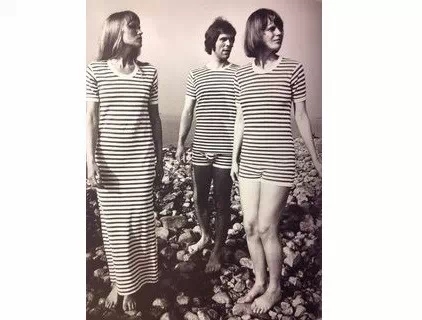
(In 1968, the classic design "Tasaraita" designed by Annika Rimala was launched, the stripes representing a unisexual fashion.)
Currently, Marimekko has approximately 160 stores worldwide, the Nordic, North America and the Asia Pacific are the three main markets. According to the released Financial Statements 2017, for the first nine months of this financial year, the brand international market increased by 8% to 12.2 million euros, accounting for 45% of total sales.
The Asia Pacific region, especially the Chinese market, is one of the most critical markets for brand development. This year, Marimekko expects to increase 10-20 stores and shop-in-shops globally, and half of them will be opened in the Asia-Pacific, especially in Japan and China.
Regarding the global strategy, "keep up the own pace despite the changes" can be quite a capable describing of Marimekko's attitude towards the fluctuations fashion industry. As we all know, Finland is a country profound of its downshifting attitude, from the lifestyle to business expansion, from market development to sales construction.
Around 2012, Marimekko entered the Chinese market and currently has 8 stores in the Greater China market (5 in mainland and 3 in Hong Kong). For the highly competitive Chinese market, Tiina lamented: тI often go to China and just weeks ago, I was still in Hong Kong for a business trip. I am surprised how online and mobile shopping is popularised and favoured of in China, as well as the associated construction of local logistics, warehousing and supply chain system. In this respect, Finland and even Europe as a whole are in urgent need of development. Especially in Finland, due to high logistics costs, consumers are reluctant to adapt to new consumption patterns and are more used to shop in stores. The cognitive differences have also brought challenges to our development in China.т
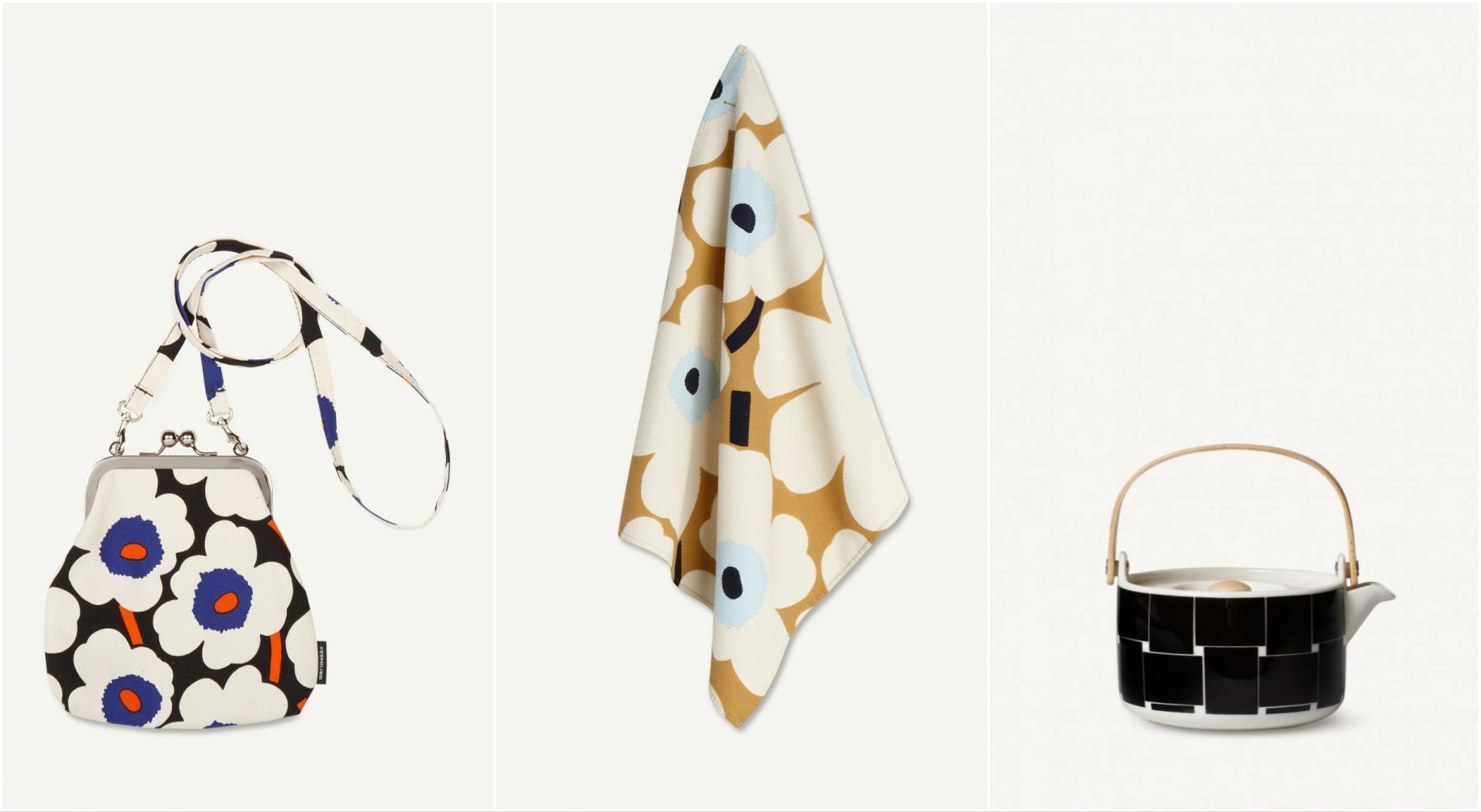
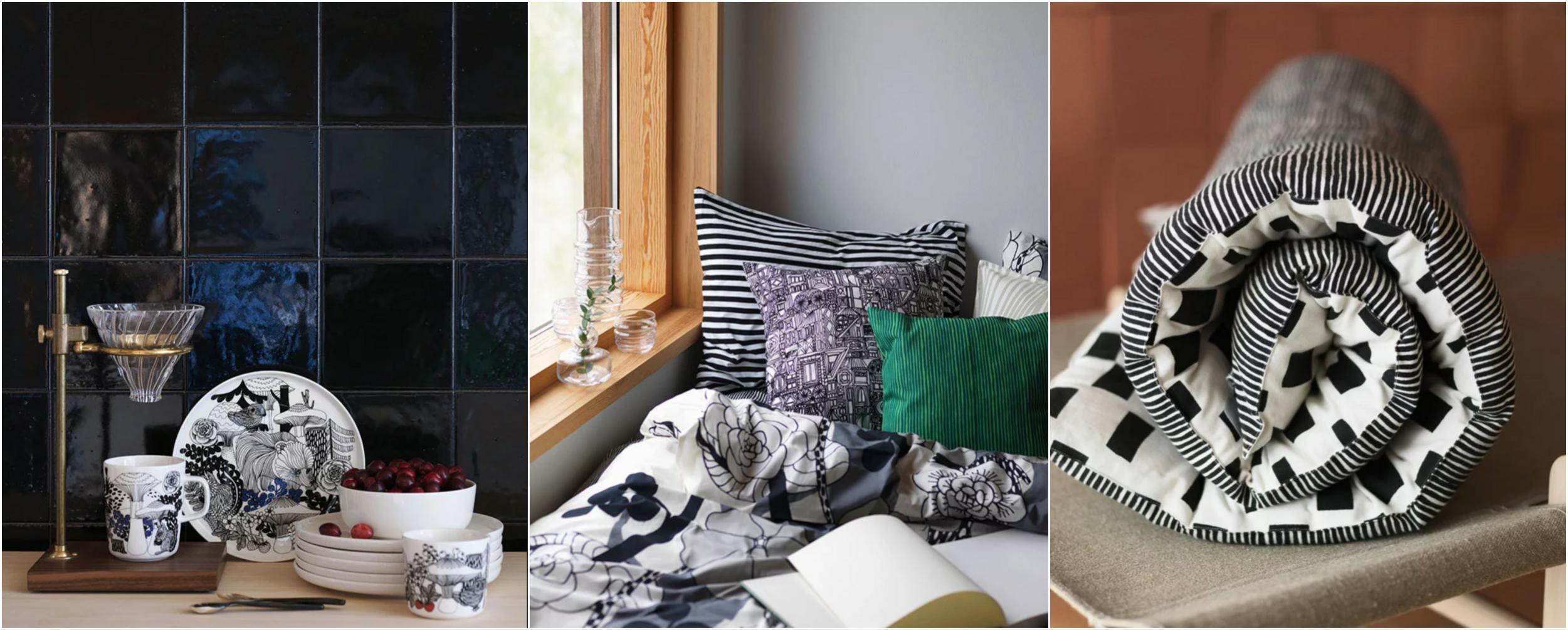
Faced with the rapid rise of China's fashion market, as well as the rapid changes in retail models and consumer behaviour, Tiina said that Marimekko will not be tempted. She stressed: "It is very important to keep up your own pace. Aimlessly keep chasing after the market trend and the competitors or the consumers will only disrupt your own pace. Hold the core values and arranging step by step, that is the key.т Although the construction of online channels is one of Marimekko's future goals in China, Tiina revealed that the company's recent plans are still focused on improving the in-store experience.
тOnline channels are developing swiftly in China. Although we are paying attention, we are mainly developing offline channels currently. Marimekko is a lifestyle brand, stores are one of the best channels for marketing. Consumers can feel the lifestyle represented by the brand through it, at the same time, understand the brand values, therefore, the stores play a very important role in the market expansion and development,т Tiina said. тPeople are discussing changes in the retail market. The competition for physical retailing is fierce, but I think whatтs really important is that brands have the ability to create a truly meaningful in-store experience for consumers. You have to create a unique sense for consumers when expecting them to enter the store."
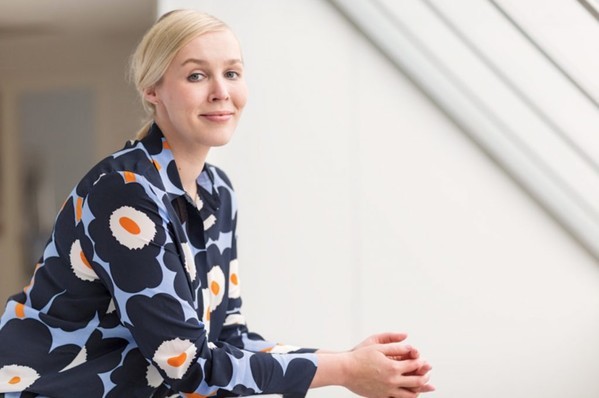












Comments